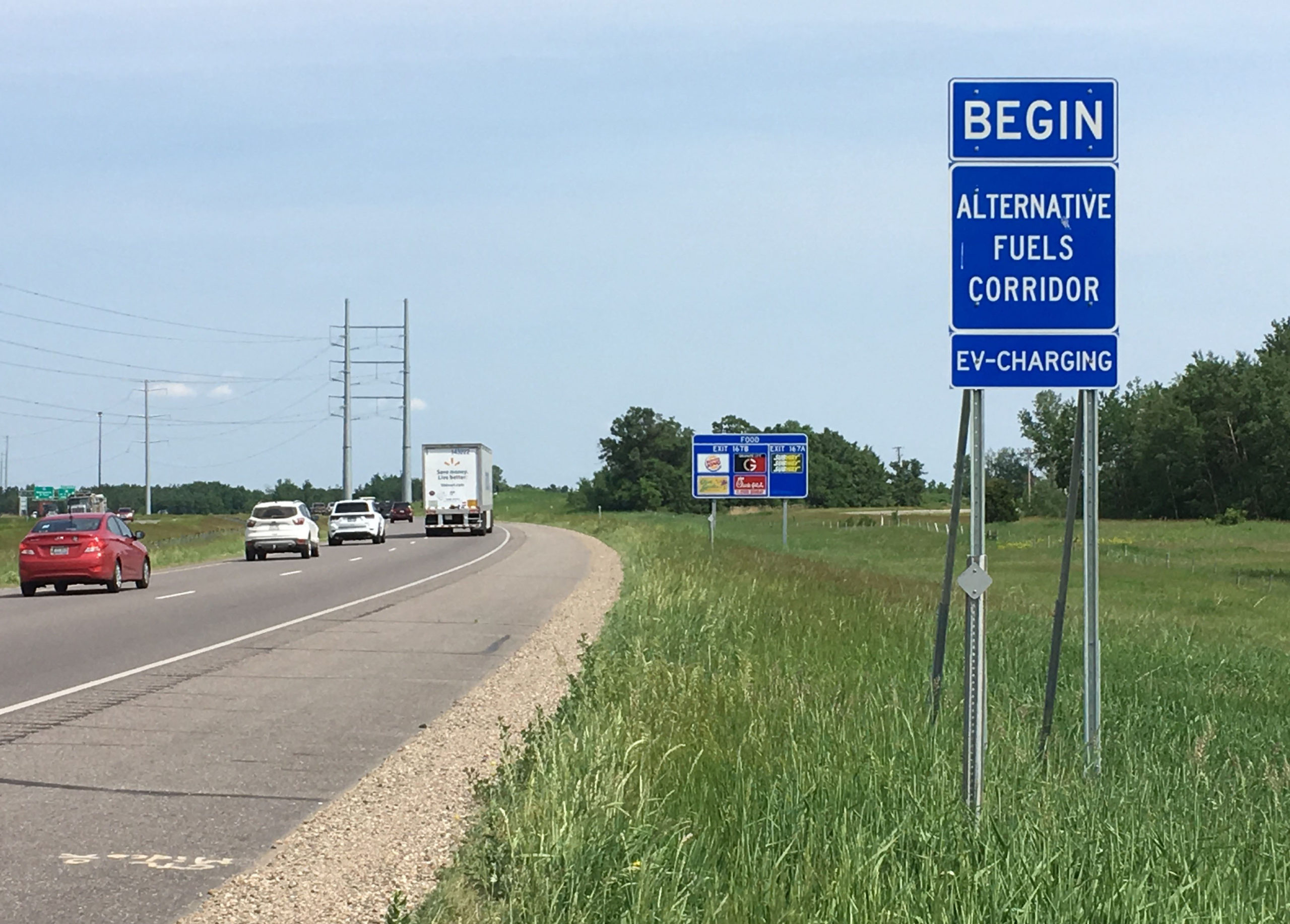For Immediate Release
Date: June 15, 2017
Contact:
Judy Jacobs, 651-366-4281, judith.jacobs@state.mn.us
MNDOT BEGINS INSTALLING ELECTRIC VEHICLE CHARGING STATION SIGNS ON INTERSTATE 94
ST. PAUL, Minn. – Motorists traveling north of St. Cloud on Interstate 94 will see new “Electric Vehicle Charging Stations” highway signs along their route to indicate there is a network of public, fast-charging stations for electric vehicles nearby. This is the first of many electric vehicle charging stations signs that motorists will see along I-94 as the Fixing America’s Surface Transportation Act is implemented.
 “MnDOT is excited to be a partner to promote and educate the public about zero emissions and the electric vehicle charging infrastructure,” said Charlie Zelle, Minnesota Department of Transportation commissioner. “We believe that alternate fuels and electric vehicles will be an important part of the future of transportation and can support progress towards the state’s GHG reduction targets”
“MnDOT is excited to be a partner to promote and educate the public about zero emissions and the electric vehicle charging infrastructure,” said Charlie Zelle, Minnesota Department of Transportation commissioner. “We believe that alternate fuels and electric vehicles will be an important part of the future of transportation and can support progress towards the state’s GHG reduction targets”
In 2016, the Federal Highway Administration selected I-94 from Port Huron, Mich., to the Minnesota/North Dakota border as one of 55 designated routes to promote alternative fuels and help drivers find vehicle charging stations nationwide.
This new network spans 35 states and covers 85,000 miles, and was created under the 2016 FAST Act. The alternative fuel corridors will be used to promote electric, hydrogen, propane and natural gas vehicles by encouraging development of fueling and charging stations along these routes.
MnDOT, in a partnership with the Minnesota Pollution Control Agency, submitted an application to designate I-94 as a ‘Zero Emissions Corridor,’ a type of alternative fuel corridor, to promote the electric vehicle charging infrastructure. Since the designation was announced, MnDOT led coordination with state departments of transportation from Minnesota, Wisconsin, Illinois, Indiana, Michigan, and the city of Detroit on a Memorandum of Understanding to re-brand this section of I-94 as the “Great Lakes Zero Emission Corridor.”
“The leading source of U.S. greenhouse gas emissions is transportation-related,” Zelle said. “We can reduce transportation emissions by supporting lower emission vehicles and alternative fuel corridors. By identifying where fueling stations can be found, we can increase the use of electric vehicles and improve air quality and meet the needs of current and future motorists.”
For a complete list of alternative fuel corridors, visit the FHWA website.
###